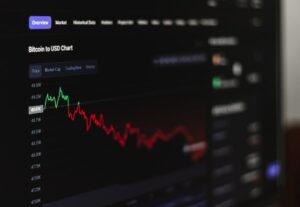Understanding Forex Trading: How Does a Forex Trade Work?
Forex trading, also known as foreign exchange trading, is the buying and selling of different currencies in the global marketplace. With an average daily trading volume of over $6 trillion, the Forex market is the largest and most liquid financial market in the world. Traders engage in Forex trading for various reasons, such as speculation, hedging, or seeking to profit from currency fluctuations.
To better understand how a Forex trade works, it is important to grasp the fundamental concepts of the market. Firstly, currencies are traded in pairs, with one currency being bought and another being sold simultaneously. The value of one currency is always relative to another, so when a trader buys one currency, they are effectively selling the other currency in the pair.
For example, if a trader believes that the Euro will strengthen against the US Dollar, they would enter a long position on the EUR/USD currency pair. This means they are buying Euros and selling US Dollars. On the other hand, if they believe the Euro will weaken, they would enter a short position, selling Euros and buying US Dollars.
Forex trades are conducted through a network of financial institutions, such as banks, brokers, and market makers. These institutions facilitate the buying and selling of currencies by providing a platform for traders to execute their trades. The Forex market operates 24 hours a day, five days a week, allowing traders to participate at any time.
The price at which a currency pair is bought or sold is determined by the market forces of supply and demand. These forces are influenced by a variety of factors, including economic indicators, geopolitical events, and central bank policies. Traders analyze these factors and use various technical and fundamental analysis tools to identify potential trading opportunities.
When a trader decides to enter a Forex trade, they must choose the appropriate position size, which determines the amount of currency they are buying or selling. The position size is typically measured in lots, with a standard lot representing 100,000 units of the base currency. However, traders can also trade in mini lots (10,000 units) or micro lots (1,000 units) to match their risk tolerance and account size.
To execute a trade, a trader must use a trading platform provided by their chosen broker. The platform allows traders to view real-time currency prices, place orders, and monitor their positions. There are various types of orders that can be placed, including market orders, limit orders, and stop orders. Market orders are executed at the current market price, while limit orders are executed at a specified price or better. Stop orders are used to protect against potential losses by automatically closing a position if the market moves against the trader.
Once a trade is executed, the trader will either make a profit or a loss, depending on the movement of the currency pair. If the price of the currency pair increases, the trader will make a profit on a long position and incur a loss on a short position. Conversely, if the price decreases, the trader will make a profit on a short position and incur a loss on a long position.
The profit or loss on a Forex trade is determined by the difference between the entry price and the exit price, multiplied by the position size. Traders can monitor their trades in real-time and close them at any time they choose. Additionally, they can set take-profit and stop-loss levels to automatically close their positions when a certain profit target or maximum loss level is reached.
It is important to note that Forex trading carries a high level of risk, and traders should only invest funds they can afford to lose. Successful Forex trading requires a solid understanding of market dynamics, risk management strategies, and continuous learning. Traders should also consider using demo accounts to practice their trading strategies before risking real money.
In conclusion, Forex trading involves buying and selling different currencies in the global marketplace. Traders use various tools and analysis techniques to identify potential trading opportunities and execute trades through a network of financial institutions. The profitability of a Forex trade is determined by the movement of the currency pair, and traders can manage their positions using different types of orders and risk management tools. However, it is crucial to remember that Forex trading involves substantial risk and traders should approach it with caution and proper education.





